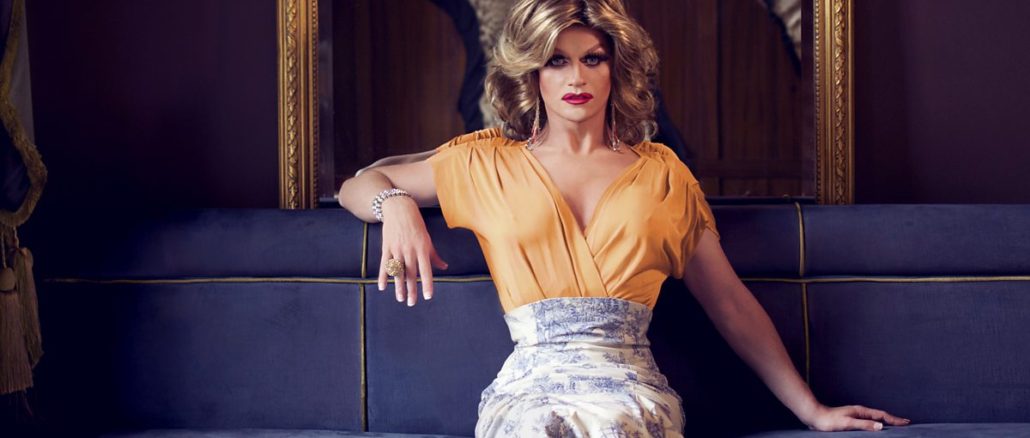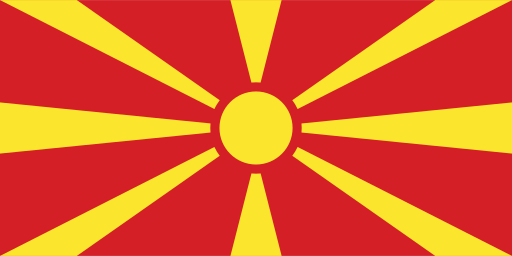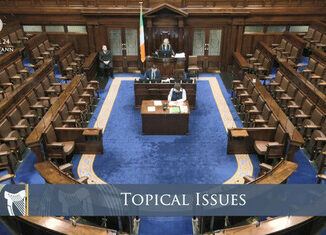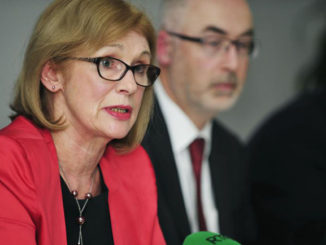
[dropcap]The[/dropcap] world of drag is exciting, colourful, fast-paced and unpredictable. Drag appeals to people because it isn’t bound by any defined set of rules, especially when it comes to the portrayal of a gender whether it’s yours or another.
Drag culture in Ireland is still very young when compared to drag culture across the world. One only has to watch the iconic American feature documentary ‘Paris is burning’ to realise that in contrast to the poverty and violence young New York drag queens have faced in the last two decades, Irish drag culture has had a smoother path in its development. A distinctive feature of Irish drag is that it incorporates a lot of Irish humour and stories and it isn’t as focused on replicating a celebrity look or personality.
The George claims that it’s responsible for the Irish drag renaissance that occurred in the 90’s. The growing drag culture in Ireland isn’t just restricted to the four walls of the George but can be found in various nightclubs, bars and colleges across the country.
Drag queens are multi-talented performers who captivate their audience from the minute they take to the stage. Being a drag queen is not just about the glamorous glitter filled clothes they wear or attempts at being funny. It’s about personifying the art they create and it’s about creating an exaggerated persona that allows people to believe in an alternative character.
Dragqueens.ie was established in 2013 and is one of the first national Irish agencies that specifically aims to create a portfolio of professional drag queens and it also acts as representatives for new talents by sourcing regulated work for them.
The global popularity of drag peaked in 2010 after the first season of the American series, ‘Rupaul Drag Race’ aired. Rupaul’s drag race is one of the first on-screen platforms for drag queens to compete in a range of specified categories such as lip syncing, dancing, imitating celebrities and making their own clothes. Nine seasons later the show has received nothing but adoration from loyal fans. LGBT students and fans across Ireland often host their own versions of drag race to replicate the show.
In Dublin alone, there are a number of drag queens who have made a name for themselves and have managed to build a strong following of Irish fans. The most famous Irish drag queen that instantly comes to mind is the nationally respected activist and public speaker Panti Bliss. The Mayo native moved to Dublin to attend art college in Dún Laoghaire in the 80s. It was during that time that Panti started delving into the world of drag performance, which at the time wasn’t done as openly as it is now.
Panti has spent over 20 years being a drag performer but has openly admitted that being an activist for LGBT issues was never intended, if anything it was a forced response to how Irish LGBT people were constantly being undermined and treated like second class citizens. Panti has spoken at pride parades and has a big voice for people living with HIV.
Another drag queen that made their name in the 90s is DCU business graduate, Shirley Temple Bar. Shirley’s career took off after being crowned 1997’s Alternative Miss Ireland’, a competition that still takes place every March. Shirley has had screen time on Irish television on a number of occasions and even hosted RTÉ’s ‘Telly Bingo’ for four years. Nowadays, Shirley hosts the weekly Bingo and has a performance scheduled every Sunday night at the George for fans who just can’t get enough of her.
Other headliners at the George include Davina Devine who is a resident performer and DJ. Her persona is is that of a bubbly Hollywood party girl, her style contrasts greatly from well known Irish drag queen Veda, who has been on the scene for over ten years, like Shirley Temple Bar she was also crowned ‘Alternative Miss Ireland’ in 1999. Her style of drag is a lot more outlandish as it’s reminiscent of a disco rave queen.
Every year, there are more and more new names in the Irish drag queen scene and they build themselves from entering competitions in colleges and LGBT nightclubs across the country. Some of them have gone to build a career for themselves as full-time performers, actresses and party hosts. It’s clear that Irish drag culture is yet to reach its peak.
Zainab Boladale



